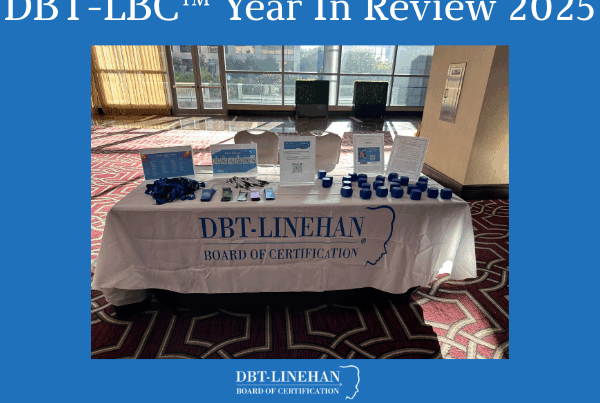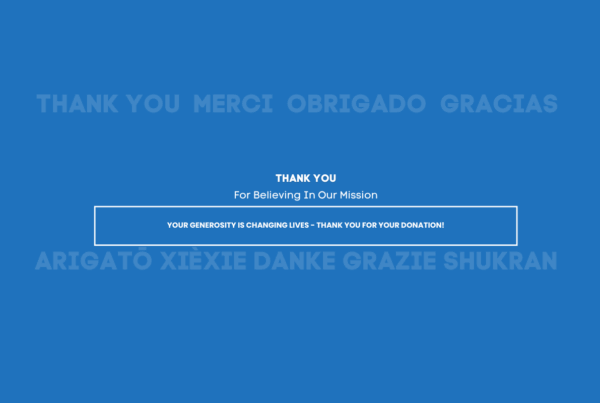As DBT therapists, we know that part of our job is to validate our client’s experiences while challenging misconceptions. But how do we address the false impressions in the community at large? Click here to read what we’ve found and what to do next!
Recent examples of public misconceptions about DBT left us wondering what common misconceptions did therapists run into about DBT? What is the best way to address these mistakes?
Cleary, a non-judgmental stance, a dialectical balance, and a willingness to provide education was required, and was anything being left out? Emily Vanderpool, DBT-Linehan Board of Certification™ volunteer, asked this question of the list – serv, and we have summarized those to keep the conversation going about addressing misconceptions in DBT.
Thank you to Carson Wellman Robinson, Hailey Goldberg, Christopher Conley, Robyn Moses, and Emily Vanderpool for your willingness to contribute your thoughts to this article.
Common misconception: DBT treatment is only appropriate for those diagnosed with Borderline Personality Disorder.
Counterpoint: While it is true that DBT was developed by Marsha Linehan for suicidal women who were not responding to CBT interventions, there are numerous studies and publications supporting the effectiveness of DBT interventions for adults, adolescents, and children with disorders of emotional dysregulation. This includes but is not limited to substance abuse, bipolar disorders, post-traumatic stress disorders, ADHD, treatment resistant depression, and eating disorders. A summary of the extensive research data can be found at https://behavioraltech.org/research/evidence/ and https://dbtpe.org/research.
Suggestion: Consider sharing that DBT was developed for clients with multiple problems across multiple areas of life, as well as for those who were not making progress with other treatments. This certainly makes them complex and does not necessarily mean a client has borderline personality disorder. DBT works to target symptoms of emotional dysregulation regardless of diagnoses and teaches clients how to live in the moment and tolerate stress healthily.
Common misconception: “I’ve already done DBT “or “I’ve already tried therapy with a DBT therapist”. Clients and non – DBT providers report ineffective results with the treatment. A review of past interventions showed that some of the modes of DBT treatment, not all, were provided.
Counterpoint: Outcome research supports DBT as effective in its comprehensive form. Evidence-based treatment for multi-diagnostic clients requires an equally multifaceted treatment. Delivering DBT with adherence to the model includes individual therapy, group skills classes, phone coaching contact between sessions, and a weekly DBT Consultation Team meeting for therapists. Without each of those being present, a program is not considered comprehensive DBT. DBT-LBC™ was designed to develop a comprehensive way to certify individual therapists in their competency to deliver DBT effectively and to certify programs that demonstrate their ability to deliver DBT programmatically with fidelity to the model as it has been researched.
Now, to help clients, many practitioners, programs, and facilities integrate DBT handouts, worksheets, or skills training outlines into their approaches. Frankly, DBT treatment components alone may work well for some clients! Still, as Marsha herself has said, “It might be good treatment (without all modes), but it ain’t DBT treatment”. Exposure to one mode does NOT equal exposure to all!
Consider the growing set of data reflecting the effectiveness of DBT Skills training as a stand alone or adjunctive treatment. Feel free to review some of those outcomes at https://behavioraltech.org/research/evidence/efficacy-trials/#Skills. Also, preliminary data shared at the 2020 ISITDBT conference included promising outcomes for adolescents and their families attending a DBT skills group alone while on a wait-list for full services (White, et al, ISITDBT 2020 presentation), as well as clients receiving telehealth DBT skills group sessions alone (Lyng et, al, ISITDBT 2020 presentation.)
Suggestion: Validate kernels of truth and share that specific parts of DBT treatment may be helpful and effective as a stand-alone treatment. Still, coming back to the function of adherent DBT as a “complex treatment for complex people” is key. Describing the intention of each ingredient in DBT goes a long way towards understanding why the meal they expected might not taste exactly right. Provide education on differences between adherent DBT and DBT informed care, and how to interpret the value of DBT-LBC Certification. For professionals outside of DBT, encouraging use of the materials with a caveat that each mode is one cog of a larger machine. Also, acknowledge the reality that providing DBT with adherence to the model includes steady financial support, assistance for clients seeking the treatment, and consistent administrative support. These are not available nearly as much as any clinician practicing most treatment models would like!
Common misconception: – DBT is not client directed and is too solution focused.
Counterpoint: Motivation and commitment sessions build the foundation of the therapeutic relationship in DBT. We meet a client where they are, regardless of their current willingness to engage in the treatment. Our role includes matching what a client wants with what DBT treatment might provide. The therapist works to create a relationship that is supportive, nonjudgmental, compassionate, and accepting (while simultaneously presenting with benevolent demands and expectations of doing better, of course). This tone spans the relationship throughout the course of DBT treatment.
Counterpoint: DBT emphasis on specific structure, procedure, and problem solving exists to keep a client struggling with suicidal and non-suicidal self-injury alive. Treatment does not work if the client is dead. Clients committing to the treatment agree to this as well. Herein lies the exquisite jazz of DBT. Therapists share and adhere to the rigid procedural roadmap of DBT with gracious acceptance of spontaneous detours. How we deal with problems is absolutely grounded in behavioral principles and contingencies, and we wrap them in validation and genuine regard. Half of the treatment is based in acceptance of what is!
Suggestion: Share that the treatment was initially developed by Marsha Linehan as a response to the perceived inflexibility of Cognitive Behavior Therapy by her clients. This can include providing a quick definition of the “D” in DBT. Balancing opposite truths to find synthesis means DBT is both client oriented and grounded in procedure, structured and flexible, and responsive to just this moment while demanding a future plan. This calls for a “yes, and…” response!
Common Misconception – A professional holding a certificate in DBT training has established the same competencies as one who carries a certification in DBT treatment.
Counterpoint: A clinician may earn a certificate indicating they have completed an educational offering on DBT, which is certainly worth doing. Still, a certificate does not assess if the information was integrated or effectively practiced by the professional completing the coursework. A certification is a multi-factored assessment of a clinician’s knowledge of theory and depth of effective practice with clients. Applicants must provide proof of educational training and attestations to past clinical experience, as well as pass a written exam to demonstrate working knowledge of DBT theory. Then samples of actual clinical work using DBT treatment are submitted, which are evaluated by an independent expert third party. Only once these assessments are complete and found to meet standards may an applicant carry a certification.
Suggestion: Validate any willingness to learn more about DBT treatment and share the differences between a certificate and a certification. Clients and other treatment professionals often are not aware of these differences and may make inferences on the treatment’s effectiveness based on incorrect information. The impact of sharing misinformation can interfere with the delivery of effective care for consumers and their loved ones. DBT-LBC Certification was created to even the playing field for those seeking a baseline measure of what a DBT-LBC certified clinician and program could provide.
Bottom line is that there are many misconceptions of DBT, and as dedicated practitioners, we carry the responsibility of addressing what is true versus challenging what isn’t. Have more thoughts on responding to some confusion on DBT treatment? Please send them to us at [email protected]and we will gladly share them!





